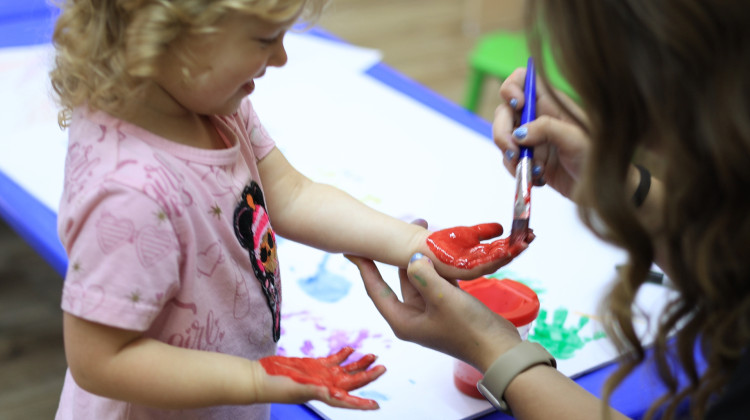
A teacher at The Growing Garden Learning Center in Mooresville paints a student's hand on Wednesday, Oct. 1, 2025.
Zach Bundy / WFYIWhen Jen Palmer opened a day care and preschool in Mooresville — a small, working-class town outside Indianapolis — it was full within a few weeks and soon had a waitlist.
“This is nuts. There's so many people needing care,” Palmer recalled thinking when the center opened a few years ago. “This was definitely a child care desert.”
But when WFYI visited The Growing Garden Learning Center in October, it had empty spots in almost every class.
There’s a simple reason: “This is a very low-income area,” Palmer said. Working parents rely on state aid to pay for care at Growing Garden. And much of that funding has evaporated.
Over the last year, Indiana stopped giving new child care vouchers, slashed the number of spots in the state preschool program and cut how much it pays for care.
The consequences have been dire for day cares. A church-run program in Indianapolis called Purpose of Life Academy has space for eight infants but just two are now enrolled because the state is not issuing vouchers for new babies. Learning Land Child Care, which has two centers in Martinsville, has cut pay and laid off staff. And Kids Care Academy, in New Albany, closed.
Early Learning Indiana, which advocates for child care, estimates that statewide, providers are losing about $3.8 million in funding each week as a result of the cuts to enrollment and reimbursement rates.
At Growing Garden, Palmer did not replace temporary staff who left at the end of the summer. The center now has almost a third fewer workers. But even after making cuts, she still expects to be in the red, with a loss of about $33,000 this year.
If the state cuts remain in place, Palmer said, “my fear is that we will close down.”
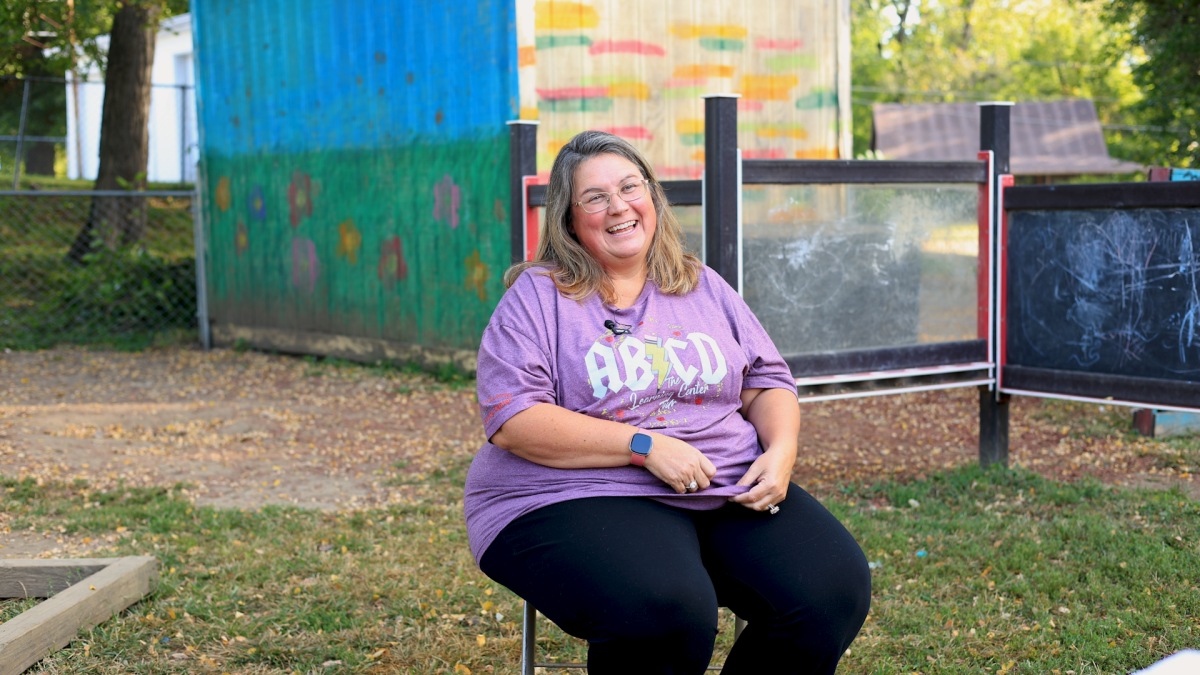
Leaning on temporary federal aid
Many child care providers didn’t know it, but the stage was set for drastic state cuts all the way back when Palmer opened her center in 2021.
When Indiana received more than $1 billion in temporary federal pandemic aid for child care, it used that money to support and expand the system providing day care, preschool and before- and after-school care.
Much of that money flowed to the federally funded Child Care and Development Fund, or CCDF, which helps low-income parents who are working or in school pay for child care.
The impact was substantial: The state gave child care vouchers and preschool scholarships to about 75% more children — nearly 70,000 — last November as it did five years before.
Advocates and child care providers say Indiana’s investment marked a significant shift.
“For a long time, many of our policymakers really felt like this was a family issue, and it was a family responsibility,” said Sam Snideman, vice president of government relations for the United Way of Central Indiana. “What we saw with shutdowns and with the difficulty in reopening was that it became very apparent that there was a place for government to step in here.”
When the federal money Indiana used to bolster child care ran out last year, Republican Gov. Mike Braun proposed substantially raising state funding for the vouchers. But lawmakers balked, instead offering a far smaller, short-term budget increase designed to ensure the state would not have to take vouchers away from children currently in the program.
In the face of an unexpectedly gloomy revenue forecast, Indiana reduced funding for child care.
The cuts have left parents without care or struggling to pay higher bills and left day cares reeling.
“It's a disaster, right?” Snideman said. “And that's to put it charitably.”
Braun administration response
Braun’s administration says the cuts to state support for child care were unavoidable because the expansion had relied on temporary funding. Adam Alson heads the Office of Early Childhood and Out-of-School Learning under Braun. He took over soon after the state stopped giving new vouchers.
He told WFYI that child care providers were blindsided by cuts to funding because former Gov. Eric Holcomb’s administration didn’t tell providers what to expect.
“The previous administration had no plan on what to do around child care funding past the end of 2024 when the federal COVID funds ran out,” Alson said in an interview with WFYI. “That is the both extremely frustrating — but also tragic part of this.”
“The thing that we are doing differently now is that we are being very transparent and being open with the choices, the very difficult choices that we as an office are making.”
The state does not plan to make other cuts to reimbursement rates for providers, Alson said. But it expects the freeze on new voucher enrollment to continue until 2027. The voucher waitlist reached nearly 31,000 children in September.

Cuts hit high-quality day cares
For years, Indiana has encouraged day cares to improve. The state pays programs with higher quality-ratings more per week.
But cuts over the last year have hit hard. Day cares that earned the highest rating from the state have experienced the largest cuts — at an average of more than 20% — according to an analysis by Early Learning Indiana.
“The message we are sharing out there is quality is not important anymore,” said Hanan Osman, executive director of the Indiana Association for the Education of Young Children. “Our focus is just creating warm-body environments rather than having high-quality programs.”
At Growing Garden, Palmer says she is in a bind because she encouraged staff to pursue training and degrees in early childhood education.
One of those educators is Halie Stinemetz, who expects to earn a bachelor’s degree.
She hopes to stay at Growing Garden because she has seen how preschool can benefit students. “That makes me feel important as a person, to make sure these kids are ready for kindergarten,” Stinemetz said.
But if she gets an education degree and license, Stinemetz would also be qualified for elementary teaching jobs with better pay and benefits.
Palmer says she pays between $15 and $20 per hour, far higher than when she opened her doors. But that pay is unsustainable after the state cuts, Palmer said. She’s not sure what she will do.
“Finding staff that will work $7, $8 an hour. That's not my life plan,” she said. “That's not what these kids deserve. That's not what any child deserves.”
Benefits of high-quality child care
Child care not only has the potential to improve economic stability for families, it can also have significant benefits for children.
Overall, research shows that providing high-quality early childhood education improves children’s cognitive, social-emotional and physical outcomes, said Dana Charles McCoy, an associate professor at the Harvard Graduate School of Education.
Research is mixed on whether those benefits sustain over time, McCoy said. But there is evidence that high-quality programs in particular can have benefits that last into adulthood.
Programs with lower student-teacher ratios and well-trained teachers are typically considered high-quality. Those features can lay the groundwork for crucial experiences, including teachers’ “warm, stimulating, and responsive engagement with children,” McCoy wrote in an email to WFYI.
“When [early child care and education] centers close down, this doesn't necessarily mean that parents no longer need care for their children. Parents still need to work,” McCoy wrote. Parents will ultimately have to pay more for care or send their children to lower quality options.
“In either case, families are going to lose,” McCoy wrote.
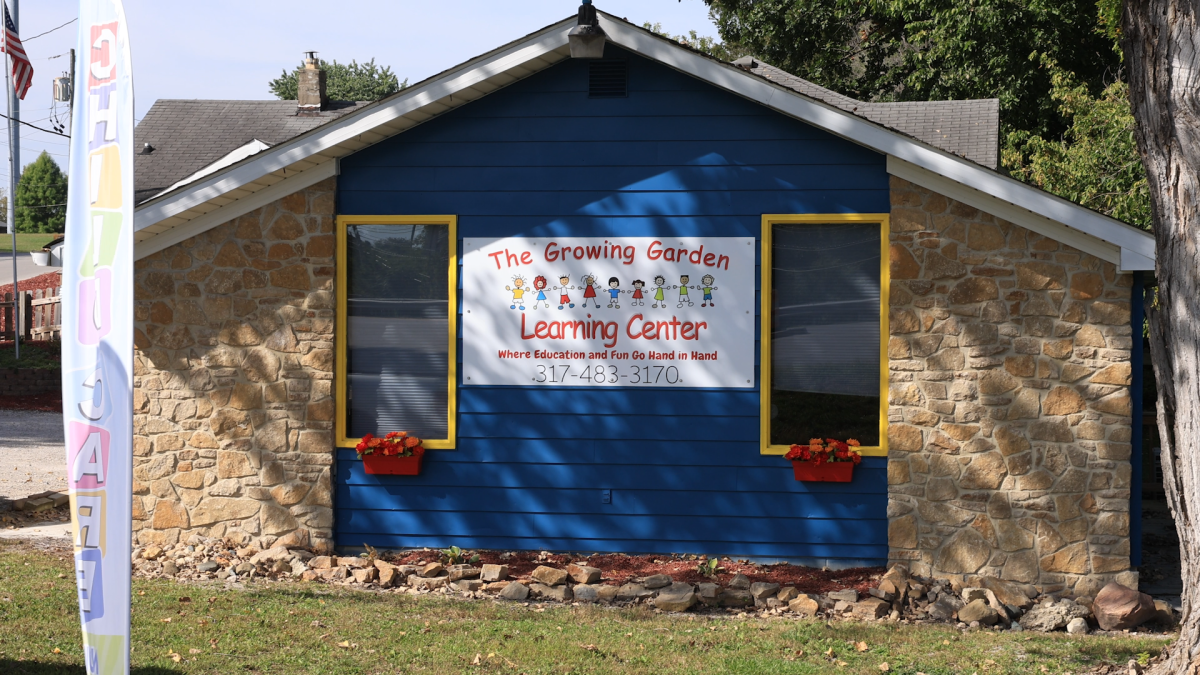
Intervening early
Palmer said one reason Growing Garden stands out is because teachers know how to work with kids with differences, including those with disabilities like autism. They work with kids who struggled in other settings — and some who’ve been kicked out.
Growing Garden is tucked back from the road with a huge yard. On a sunny morning in October, Jodie Wallace is outside with the 2-year-old class. Wallace is focused on one little boy.
“Ah, ah, ah choo,” Wallace repeats as she balances a bowl on her head then lets it roll off. The boy laughs giddily. “Yeah, you want to try? Come here. You do it.”
The vast majority of toddlers use dozens of words by 24 months. But the boy Wallace is playing with isn’t speaking yet. A therapist comes to Growing Garden to work with him. And Wallace tries to use techniques the therapist has shown her.
“He has a hard time sitting still or staying engaged in any activity that we do,” Wallace said. “If we can make it more fun for him, then he stays more engaged.”
Palmer worries about what would happen to kids like this 2-year-old — who need extra support — if the center closes. Even if she finds a way to stay open, Palmer said, many Mooresville families won’t be able to afford trained, reliable child care without state help.
“My fear is that they would be sitting in places that aren't licensed, or the kids would bounce from house to house to house as they try to piece things together so they continue working,” Palmer said. “I don't know what they will do.”
Contact WFYI Education Reporter Dylan Peers McCoy at dmccoy@wfyi.org
 DONATE
DONATE




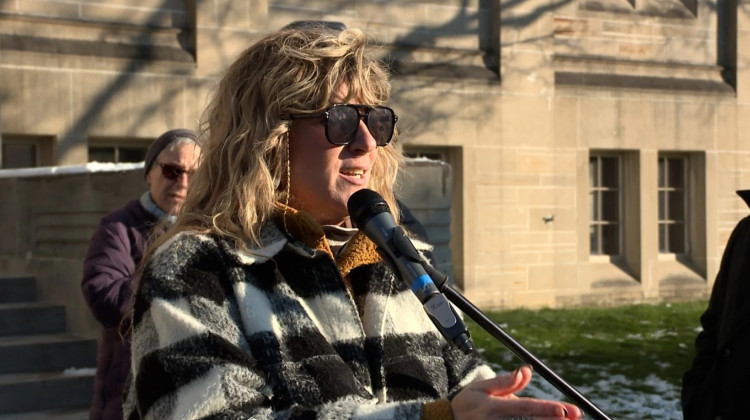
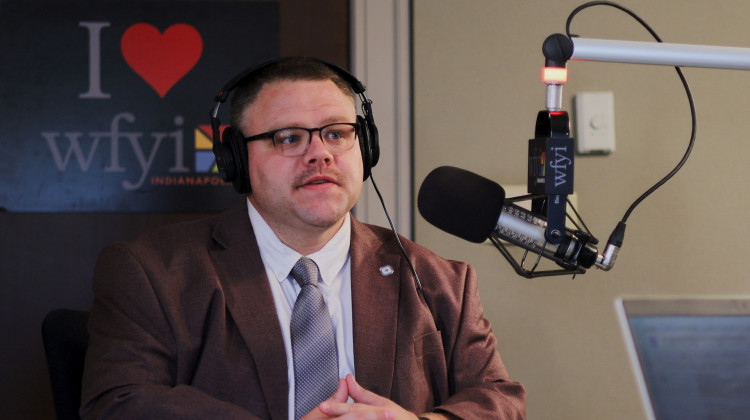
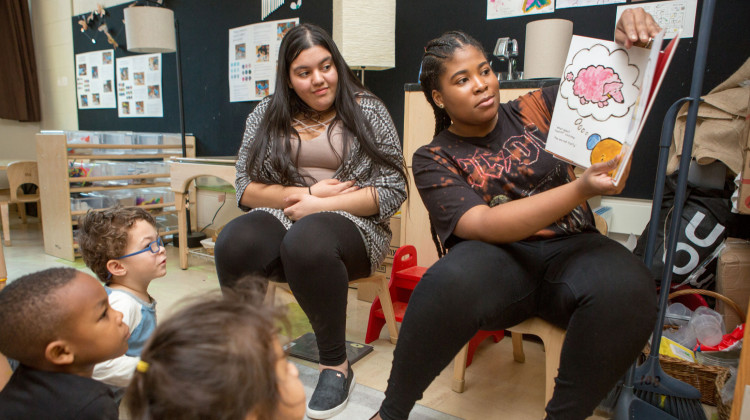

 Support WFYI. We can't do it without you.
Support WFYI. We can't do it without you.